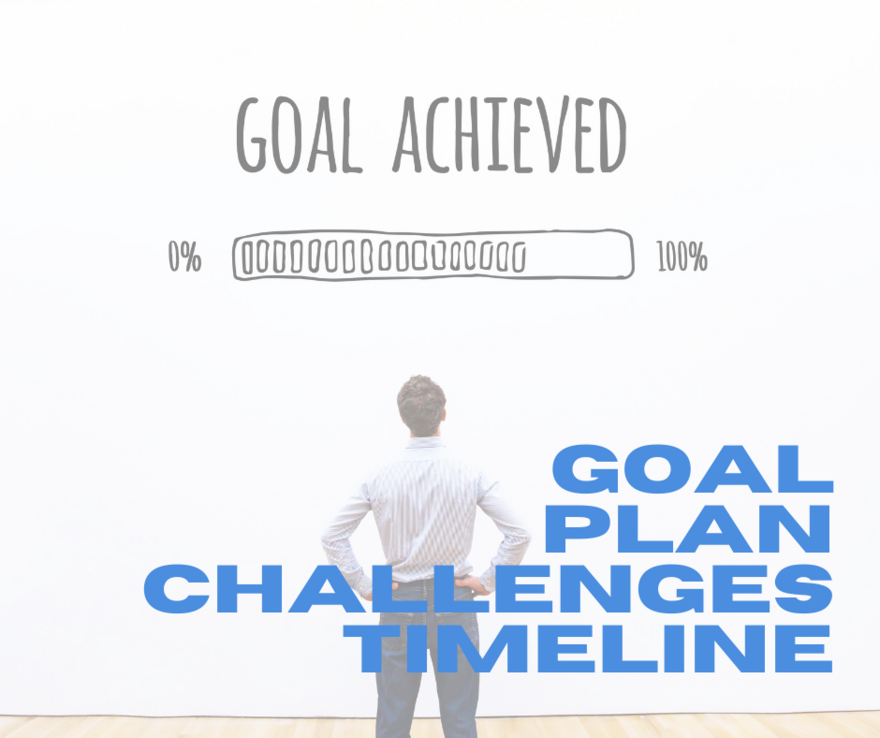Goal, Plan, Challenges, Timeline

The Blue Sky team embraces the Kaizen approach. One way we live Kaizen is through reading articles and books to improve ourselves and our company in order to best serve our clients. Many of our team members all read the same books once someone gives a recommendation. This has resulted in some really interesting discussions and improvements to our internal processes.
One book we recently read was The Sales Acceleration Formula by Mark Roberge. Mark joined HubSpot during its startup and grew sales from $0 to $100m in seven years! The book lays out the plans for how HubSpot grew and trained its sales team. As I read the book, I tabbed a lot of pages that captured ideas we could use at Blue Sky. Less than ten pages from the end, I had an epiphany reading a concept that directly correlates to business owners who are considering exiting their businesses.
GPCT: Goal, Plan, Challenges, Timeline
Goal
We all know what goals are. I’m sure we have all set a goal or two. Were those goals clearly defined though? Were they specific and measurable?
We are working with a company that has their goal written in stone. Let’s call this company Exit Co.. Exit Co. wants to sell the company when the enterprise value is $20M. This company has put a measurable number attached to the goal of selling the business. We can easily measure this goal by performing a valuation of the company. In this case we have already performed the initial valuation. The company has a Fair Market Value of approximately $12M today.
Plan
We need a plan to add at least $8M in additional value to the company. There are a number of ways the company could achieve its goal.
- Expand its product offering
- Increase sales to existing clients
- Grow through acquisition
Exit Co. has put together a plan that is a hybrid of expanding its product offerings and growing through acquisition. Exit Co. is searching for a company that has an established customer base who purchases the products Exit Co. provides but also has complimentary products Exit Co. doesn’t currently offer. The plan works on a couple of different fronts. It increases top line sales by bringing in the additional revenue. It also allows Exit Co. to sell the new product to its existing customers, increasing revenues further.
Exit Co. has already begun its search. Exit Co. submitted an LOI to one company but unfortunately were not first to the table and another buyer scooped it up. So we know the company we are searching for exists. We just have to go find it.
Challenges
There are many challenges that could arise in this plan that we can identify and attempt to put additional plans in place to mitigate.
- Is the manufacturing facility large enough to accommodate the additional equipment?
- Can we successfully transfer all or the majority of the sales accounts?
- Will there be redundant personnel?
- Can we cross train or will we have to let some staff go post-acquisition?
In this case the challenges will be different depending on the target company. However as advisors who have helped clients through acquisitions before we have a good idea of what will most likely come up and we can prepare ahead of time for many of the scenarios.
Timeline
Exit Co. would like to sell the company in 5 years. Again this is a specific and measurable aspect to the goal. Five years is an ideal timeline for this business owner but he does have flexibility.
Another timeline we know is that it typically takes 4-6 months to purchase a business. A smooth integration of the company could take a year or more. Then the average time to turn around and sell Exit Co. is approximately 9. Months. So, we can do the math to figure that this company needs to make at least one acquisition within the next 2.5 years in order to sell the company in 5 years at a value of $20M. Depending on the acquisition, purchasing one company could be enough to boost the enterprise value to $20M. If that is not the case, then we have enough time to make two acquisitions and still be within the 5 year window.
The GPCT outline works for many different business exit planning scenarios. Here are two examples.
Goal: To sell the company in 3 years
Plan: Begin mentoring key employees to fulfill leadership roles the owner currently handles
Challenges: Do these employees want additional responsibility? Can they handle the new roles? Do they have the technical aptitude and competency?
Timeline: New leaders need to be in place by the time the business is listed for sale. (This way they are a proven commodity).
Goal: Decrease Customer X’s concentration by 10%
Plan: Put in place a sales strategy to win more new customers
Challenges: Not enough sales staff. Sales staff are not properly trained. High competition.
Timeline: Customer concentration should be in line prior to listing the business for sale.
In the context the GPCT was written in it is a tool for sales personnel to help customers identify what they needed so that sales could better position the product and convert more customers. I think this also works beautifully for business owners who will eventually sell their businesses. I know a lot of time and energy is put into business strategy and implementation. I have never seen that same time and energy put into exit planning. This could be an easy way to start putting your exit plan into motion.


0 comments
Leave a comment
Please log in or register to post a comment